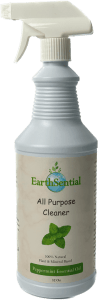Risks for Chronic Lower Respiratory Diseases
Risks for Chronic Lower Respiratory Diseases pose a significant threat to our respiratory health, a cornerstone of our overall well-being, vital for every breath we take and every moment we live.
The importance of healthy lungs cannot be overstated, as they act as the gateway to life-sustaining oxygen and the expulsion of harmful carbon dioxide. However, silently affecting millions of lives worldwide are chronic lower respiratory diseases, which lurk in the shadows of this vital system.
In this Article
- Intro: Traditional cleaners and their potential risks for individuals with chronic lower respiratory diseases.
- Understanding Chronic Lower Respiratory Diseases
- Traditional Cleaners: A Closer Look
- Traditional Cleaners and Respiratory Health
- Specific Risks for Chronic Lower Respiratory Diseases
- Safer Alternatives for Cleaning
- Conclusion: Recap of the risks associated with traditional cleaners for individuals with chronic lower respiratory diseases

How Traditional Cleaners Compromise the Respiratory Wellness of Millions
Picture the countless individuals grappling with asthma, emphysema, and chronic bronchitis, their daily routines intrinsically intertwined with the struggle for each breath.
These respiratory conditions have become alarmingly prevalent, casting a shadow over the lives of both young and old. According to medical experts, chronic lower respiratory diseases are among the leading causes of illness and disability globally, posing a significant burden on individuals, families, and healthcare systems alike.
While the causes of these diseases can be multifaceted, it is crucial to shed light on a lesser-known contributor: traditional household cleaners. Yes, the very products intended to sanitize our living spaces can inadvertently wreak havoc on the respiratory health of those already grappling with chronic conditions. Understanding the risks posed by traditional cleaners is not just an academic exercise but a vital step towards protecting the well-being of individuals battling these respiratory challenges.
In this article, we delve into the intricate relationship between traditional cleaners and chronic lower respiratory diseases. By uncovering the hidden hazards and unveiling the potential risks, we aim to raise awareness about this critical issue. Moreover, we will explore safer alternatives and provide practical tips to help individuals safeguard their respiratory health amidst the daily chores.
Together, let us embark on this journey to comprehend the dangers that traditional cleaners pose to those with chronic lower respiratory diseases. By doing so, we can pave the way towards a cleaner, healthier, and more breathable future for all.
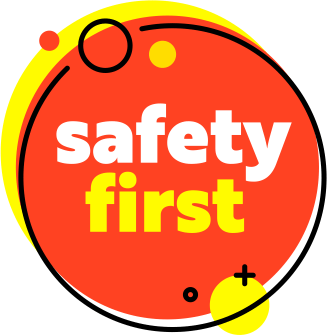
Traditional cleaners and the risks they pose on individuals with chronic lower respiratory diseases
When it comes to maintaining a clean and tidy home, many of us reach for traditional cleaners without a second thought. These products have long been a staple in our cleaning arsenal, promising to banish dirt, germs, and odors with ease. However, what most people are unaware of is the potential risks that these seemingly innocent cleaners can pose, especially for individuals already grappling with chronic lower respiratory diseases.
Traditional cleaners encompass a wide range of products found in almost every household, from disinfectants and bleach to air fresheners and multipurpose sprays. While they may effectively remove stains and create a sparkling environment, what lurks beneath their fresh scents and sparkling appearances is a concoction of chemicals that can have detrimental effects on respiratory health.
For individuals already battling chronic lower respiratory diseases such as asthma, emphysema, and chronic bronchitis, the risks associated with traditional cleaners can be particularly alarming. The chemicals present in these cleaners can irritate the airways, trigger respiratory symptoms, and even exacerbate existing conditions. It’s like adding fuel to an already smoldering fire, making it increasingly difficult for individuals to breathe freely and enjoy a good quality of life.
By understanding the potential risks that traditional cleaners pose, we can make more informed choices about the products we use in our homes. In the following sections, we will delve deeper into the specific hazards associated with traditional cleaners and explore alternative, safer options that can help protect the respiratory health of those with chronic lower respiratory diseases. It’s time to take a closer look at our cleaning habits and prioritize the well-being of our lungs, ensuring a healthier living environment for everyone involved.

Chronic Lower Respiratory Diseases and the Battle for Respiratory Health
Chronic lower respiratory diseases encompass a group of conditions that affect the lungs and the airways, often leading to long-term breathing difficulties. Three of the most prevalent chronic lower respiratory diseases are asthma, emphysema, and chronic bronchitis. Let’s take a closer look at each of these conditions to better understand their impact on respiratory health.
Asthma, a condition many of us have heard of, is characterized by recurrent episodes of wheezing, breathlessness, chest tightness, and coughing. It occurs when the airways become inflamed and narrow, making it harder for air to flow in and out of the lungs. These episodes, often triggered by allergens, exercise, or environmental factors, can range from mild to severe, and managing asthma requires ongoing treatment and care.
Emphysema, on the other hand, is commonly associated with long-term exposure to irritants, such as tobacco smoke or air pollution. Over time, these irritants damage the air sacs in the lungs, impairing their ability to efficiently exchange oxygen and carbon dioxide. As a result, individuals with emphysema experience shortness of breath, chronic coughing, and a reduced tolerance for physical exertion.
Chronic bronchitis, often overlapping with emphysema in a condition known as chronic obstructive pulmonary disease (COPD), is characterized by the inflammation of the bronchial tubes. These tubes, responsible for carrying air to and from the lungs, become swollen and produce excessive mucus. The persistent cough, accompanied by sputum production, can last for months and recur over several years. This chronic irritation in the airways impairs proper airflow and oxygenation.
While each of these chronic lower respiratory diseases has distinct characteristics and causes, they share a common thread—difficulty in breathing. For individuals living with these conditions, even simple tasks like climbing stairs or engaging in moderate physical activity can become challenging endeavors.
Understanding the impact of asthma, emphysema, and chronic bronchitis is crucial in recognizing the significance of respiratory health and the need to protect it. In the following sections, we will explore the potential risks posed by traditional cleaners and the implications they have on the lives of individuals already burdened by these chronic respiratory diseases.
Struggling for Breath
Chronic lower respiratory diseases, including asthma, emphysema, and chronic bronchitis, take a toll on lung function and overall respiratory health. Let’s delve into how these conditions impact our breathing and well-being.
In asthma, the airways become inflamed and sensitive to certain triggers. When exposed to these triggers, such as allergens or irritants, the airways constrict, making it difficult for air to flow freely. The inflammation and narrowing of the airways cause symptoms like wheezing, shortness of breath, chest tightness, and coughing. Over time, repeated episodes of airway constriction can lead to irreversible lung damage and reduced lung function.
Emphysema primarily affects the air sacs in the lungs called alveoli. Long-term exposure to irritants, especially tobacco smoke, causes these delicate air sacs to lose their elasticity and become damaged. As a result, the lungs struggle to effectively exchange oxygen and carbon dioxide. The damaged air sacs trap air in the lungs, leading to a sensation of breathlessness and difficulty in fully exhaling. Gradually, the lung capacity diminishes, making it increasingly challenging to perform daily activities that require physical exertion.
Chronic bronchitis is characterized by persistent inflammation and excessive mucus production in the bronchial tubes. The constant irritation and swelling of these airway passages impede the flow of air and disrupt the clearance of mucus. The accumulation of mucus leads to a persistent cough and difficulty in clearing the airways. This chronic inflammation and mucus build-up restrict the proper airflow and oxygenation, further compromising respiratory health.
The impact of these chronic lower respiratory diseases extends beyond the physical symptoms. They can significantly affect an individual’s quality of life, limiting their ability to engage in physical activities, impacting sleep, and causing emotional distress. The constant struggle for breath and the fear of exacerbations can create anxiety and a sense of helplessness.
Understanding the profound impact of these diseases on lung function and overall respiratory health emphasizes the critical need to protect and support individuals with chronic lower respiratory diseases. By recognizing the risks associated with traditional cleaners, we can take proactive steps to create a cleaner and safer living environment that promotes better respiratory well-being.
Traditional Cleaners: A Closer Look
Let’s take a closer look at traditional cleaners, the household products we often turn to for keeping our living spaces clean and fresh. These cleaners are commonly found in households worldwide and are typically formulated to tackle various cleaning tasks. Here, we’ll explore the definition of traditional cleaners and provide examples of the ones frequently used:
Traditional cleaners refer to a wide range of cleaning products that have been used for generations. They come in different forms, including liquids, sprays, powders, and wipes, each designed to target specific cleaning needs. These cleaners often promise effective removal of dirt, stains, grease, and germs, making our homes appear sparkling clean.
One of the most recognizable traditional cleaners is bleach. It’s a potent disinfectant and whitening agent, commonly used for sanitizing surfaces, laundry, and even as a mold and mildew remover. Bleach contains chemicals like sodium hypochlorite that exhibit strong antimicrobial properties. However, its powerful nature also means that it can be harsh on surfaces and potentially harmful if not used correctly.
Another example is multipurpose sprays, which are versatile cleaners designed for general cleaning tasks. They are typically used on countertops, appliances, and other surfaces to remove dirt and grime. Multipurpose sprays often contain a combination of detergents, solvents, and fragrances to provide effective cleaning and leave a pleasant scent behind.
We also have air fresheners, which are commonly used to eliminate odors and create a more pleasant indoor environment. Air fresheners come in various forms, including sprays, aerosols, gels, and plug-ins. They often contain synthetic fragrances and chemicals that mask unpleasant smells. However, it’s important to note that these fragrances can sometimes cause respiratory irritation, especially for individuals with pre-existing lung conditions.
These examples represent just a fraction of the wide array of traditional cleaners available. Other common household cleaning products include disinfectants, floor cleaners, bathroom cleaners, and window cleaners. Each of these products is formulated with specific purposes in mind, aiming to simplify our cleaning routines and maintain a hygienic living environment.
However, as we delve deeper into the topic, it becomes apparent that some traditional cleaners may carry potential risks, particularly for individuals already dealing with chronic lower respiratory diseases. In the following sections, we’ll explore the chemicals and compounds present in these cleaners and shed light on the potential respiratory hazards they may pose.
Exploring the Respiratory Risks of Chemicals Found in Traditional Cleaners
Traditional cleaners commonly contain a variety of chemicals and compounds, each serving a specific cleaning function. Understanding these ingredients is crucial in comprehending the potential risks they may pose to respiratory health. Let’s explore some of the typical chemicals found in traditional cleaners:
Volatile Organic Compounds (VOCs):
VOCs are a group of chemicals that easily evaporate at room temperature, releasing gases into the air. They are often used in cleaners to enhance their performance and provide desirable properties such as fast drying or fragrance. Examples of VOCs include benzene, toluene, and formaldehyde. However, prolonged exposure to high levels of VOCs can irritate the eyes, throat, and lungs, potentially triggering respiratory symptoms or worsening existing conditions.
Ammonia:
Ammonia is a common ingredient in many cleaning products, particularly glass and window cleaners. It is highly effective in cutting through grease and leaving surfaces streak-free. However, ammonia has a strong odor and can be irritating to the respiratory system, causing coughing, wheezing, and shortness of breath, especially in individuals with asthma or sensitivities.
Sodium Hypochlorite:
Sodium hypochlorite, commonly known as bleach, is a potent disinfectant and sanitizer. It is used in various cleaning applications, including bathroom cleaners and laundry detergents. While effective at killing germs, bleach emits fumes that can irritate the respiratory tract and trigger respiratory symptoms, particularly in individuals with asthma or other lung conditions.
Fragrances:
Many traditional cleaners contain synthetic fragrances to provide a pleasant scent after cleaning. However, these fragrances can be composed of numerous chemicals, some of which may release volatile compounds into the air. Fragrances are known to be respiratory irritants for some individuals, leading to symptoms like coughing, sneezing, and throat irritation.
Chlorine Compounds:
Chlorine compounds, such as sodium hypochlorite (bleach) and trichloroisocyanuric acid, are commonly used as disinfectants and sanitizers. While effective against bacteria and viruses, chlorine compounds can release chlorine gas, which can irritate the respiratory system and cause respiratory distress in high concentrations.
It’s important to note that the specific chemical compositions of traditional cleaners can vary widely depending on the brand and product. Reading product labels and understanding the potential hazards associated with certain chemicals can empower individuals to make informed choices about the cleaners they use in their homes.

Respiratory hazards associated with traditional cleaners
Traditional cleaners, despite their effectiveness in tackling dirt and germs, can pose potential respiratory hazards, particularly for individuals already grappling with chronic lower respiratory diseases. Understanding these hazards is vital in safeguarding respiratory health. Let’s delve into the potential risks associated with traditional cleaners:
Respiratory Irritation:
Many chemicals found in traditional cleaners, such as VOCs and ammonia, have the potential to irritate the respiratory system. When inhaled, these substances can trigger inflammation in the airways, leading to symptoms like coughing, wheezing, and shortness of breath. For individuals with pre-existing respiratory conditions like asthma, emphysema, or chronic bronchitis, exposure to these irritants can exacerbate their symptoms and make it harder for them to breathe freely.
Sensitization and Allergies:
Some chemicals present in traditional cleaners, including fragrances and preservatives, have been linked to sensitization and allergic reactions. Prolonged exposure or repeated contact with these substances can sensitize the respiratory system, causing allergic responses like asthma attacks or allergic rhinitis. Individuals with existing allergies or asthma are particularly vulnerable to these adverse effects.
Chemical Fumes and VOCs:
Certain traditional cleaners, like bleach or aerosol sprays, release fumes containing chemicals or VOCs into the air. In poorly ventilated spaces, these fumes can accumulate and be inhaled, leading to respiratory irritation and discomfort. Long-term exposure to high levels of VOCs has been associated with respiratory problems and may even contribute to the development of respiratory conditions over time.
Support Safer Alternatives:
Show your commitment to respiratory health by actively supporting companies and brands that prioritize the creation of safer cleaning alternatives. Seek out products labeled as non-toxic, environmentally friendly, and low in volatile organic compounds (VOCs). By choosing these alternatives, we send a clear message to manufacturers that respiratory health matters and that the demand for safer options is growing.
Inhalation of Particulate Matter:
Some traditional cleaners, such as powders or sprays, can generate fine particulate matter when used or dispersed. These particles can be inhaled deeply into the lungs, potentially causing irritation and triggering respiratory symptoms. Individuals with compromised lung function may be more susceptible to the adverse effects of particulate matter.
Taking a Stand for Clear Lungs
In the wake of our enlightening journey through the intricate web of traditional cleaners and their impact on respiratory health, we stand at a crossroads, armed with the knowledge and conviction to make a difference. It is now our collective responsibility to raise awareness about the importance of respiratory wellness and champion the adoption of safer cleaning alternatives. Let our final thoughts echo with a resounding call to action:
Advocate for Change:
Let us become advocates for change, using our voices to raise awareness about the risks associated with traditional cleaners and the significance of respiratory health. Engage in conversations with friends, family, and communities, enlightening them about the potential hazards and promoting the use of safer alternatives. Share articles, resources, and personal experiences to empower others to make informed choices.
Educate and Empower:
Knowledge is power, and it is our duty to disseminate it. Educate yourself and others about the ingredients, chemicals, and potential respiratory risks found in traditional cleaners. Empower individuals with chronic lower respiratory diseases to understand the connection between their condition and cleaning products, guiding them towards safer alternatives that can enhance their quality of life.
Spread the Word:
Harness the power of social media, community groups, and local organizations to spread the message far and wide. Share informative posts, infographics, and educational materials highlighting the risks of traditional cleaners and the benefits of using safer alternatives. Encourage others to join the movement, creating a ripple effect that fosters respiratory wellness in homes across the globe.
Support Safer Alternatives:
Show your commitment to respiratory health by actively supporting companies and brands that prioritize the creation of safer cleaning alternatives. Seek out products labeled as non-toxic, environmentally friendly, and low in volatile organic compounds (VOCs). By choosing these alternatives, we send a clear message to manufacturers that respiratory health matters and that the demand for safer options is growing.
Lead by Example:
Be a beacon of change in your own daily life. Embrace the use of eco-friendly, non-toxic cleaning alternatives and practice mindful cleaning habits that prioritize respiratory wellness. By leading by example, you inspire others to follow suit, creating a domino effect that can transform the way we clean our homes and safeguard our respiratory health.
Let us remember that our homes should be havens of wellness, nurturing our bodies and minds. By prioritizing respiratory wellness, we not only protect ourselves and our loved ones, but we also contribute to a cleaner and healthier planet.
Together, we have the power to reshape the landscape of cleaning practices and safeguard respiratory health for generations to come. Let us forge ahead with determination, compassion, and unwavering commitment to respiratory well-being. It is time to breathe easier, one conscious choice at a time.
Safer Alternatives for Cleaning
In the quest to banish the terrifying risks posed by traditional cleaners, a glimmer of hope emerges in the form of safer alternatives. Enter the realm of alternative cleaning products, gentle warriors that wield the power to cleanse without compromising respiratory health. Among these champions stands EarthSential, a brand that offers a range of solutions to keep our homes pristine and our lungs unburdened.
EarthSential presents a sanctuary of ready-to-use all-purpose cleaners and a concentrated formula, designed to strike the perfect balance between cleanliness and respiratory well-being. These products are crafted with meticulous care, ensuring that their ingredients are free from the malevolent compounds that haunt traditional cleaners. By embracing EarthSential, we embark on a path towards a cleaner home, fortified by the knowledge that our respiratory health remains safeguarded.
But EarthSential is not the sole defender in this battle against respiratory demons. In the broader realm of alternative cleaning products, numerous other options exist to alleviate our fears and empower us to make safer choices. Let us explore a few of these brave alternatives:
Natural Cleaning Solutions:
Harnessing the power of nature, natural cleaning solutions offer a comforting embrace. Ingredients such as vinegar, baking soda, lemon juice, and essential oils become our allies, providing effective cleaning without the sinister side effects. They exorcise dirt and grime while emitting gentle scents, offering a refreshing departure from the overwhelming fragrances of traditional cleaners.
Green Cleaning Products:
Joining the ranks of the eco-friendly revolution, green cleaning products emerge as saviors for both the environment and our respiratory health. These products are formulated with plant-based ingredients, devoid of harsh chemicals and toxins. With their gentle touch, they cleanse our surroundings, leaving behind a pristine sanctuary where our lungs can breathe freely.
DIY Cleaning Solutions:
Dare to enter the realm of DIY (do-it-yourself) cleaning solutions, where ingenuity and resourcefulness reign. By combining simple ingredients found in our pantries, such as vinegar, baking soda, hydrogen peroxide, and castile soap, we can concoct potent cleaning elixirs that vanquish dirt and grime while sparing our respiratory systems from harm.
As we embrace these alternative cleaning options, we free ourselves from the shackles of traditional cleaners and their haunting consequences. EarthSential and its comrades in the realm of alternative cleaning products stand as beacons of hope, offering us a path towards cleanliness without compromising our respiratory well-being.

Eco-friendly and non-toxic options:
Step into the realm of eco-friendly and non-toxic cleaning solutions, where a harmonious balance between cleanliness and respiratory health is achieved. In this enlightened domain, a plethora of gentle alternatives to traditional cleaners await, ready to transform our homes into sanctuaries free from harmful fumes and chemical nightmares. Let us explore a few of these wondrous substitutes:
Vinegar:
Discover the enchanting powers of vinegar, a humble ingredient that has been cherished for its cleaning prowess for centuries. This natural wonder, derived from fermented fruits or grains, possesses mild acidity that effectively cuts through grease and grime. Diluted with water, vinegar becomes a formidable all-purpose cleaner, leaving surfaces sparkling clean without leaving behind toxic residue or triggering respiratory distress.
Baking Soda:
Behold the magical abilities of baking soda, an innocuous pantry staple that reveals its true power as a cleaning agent. This gentle abrasive substance excels at tackling tough stains, eliminating odors, and scouring surfaces. Its mild alkaline properties make it an ideal companion for battling dirt without unleashing respiratory demons.
Hydrogen Peroxide:
Uncover the mystical properties of hydrogen peroxide, a natural disinfectant and stain remover. This gentle yet potent alternative to harsh chemicals can be used to tackle stubborn stains, sanitize surfaces, and eliminate odors. It provides a breath of fresh air, free from the noxious fumes that haunt traditional cleaners.
Castile Soap:
Immerse yourself in the soothing embrace of castile soap, a plant-based and biodegradable soap made from vegetable oils. Its versatility knows no bounds, as it can be utilized for a myriad of cleaning tasks, from washing dishes to scrubbing floors. Free from synthetic fragrances and harsh chemicals, castile soap offers a gentle, non-toxic alternative that doesn’t compromise respiratory health.
Essential Oils:
Embark on an aromatic journey with essential oils, potent extracts from plants that not only provide delightful scents but also possess antimicrobial properties. These natural wonders can be added to homemade cleaning solutions to enhance their cleaning power while infusing your home with a calming, pleasant aroma. Lavender, lemon, tea tree, and eucalyptus are just a few examples of essential oils that can transform your cleaning routine into a sensory experience.
By embracing these eco-friendly and non-toxic alternatives, we open the door to a world where cleanliness and respiratory health coexist in perfect harmony. These gentle substitutes, in conjunction with brands like EarthSential, pave the way for a future where our homes are free from the haunting grip of traditional cleaners.
Risks for Chronic Lower Respiratory Diseases
As we conclude our exploration into the realm of traditional cleaners and their perilous implications for individuals with chronic lower respiratory diseases, let us take a moment to recap the risks that have loomed over us. Armed with this knowledge, we can forge a path towards a safer and healthier future:
Respiratory Triggers:
Traditional cleaners contain a cocktail of chemicals and compounds that can act as potent triggers for respiratory symptoms. For individuals with asthma, emphysema, and chronic bronchitis, these triggers can induce coughing, wheezing, shortness of breath, and even severe respiratory distress.
Irritation and Inflammation:
The noxious fumes and volatile substances released by traditional cleaners can irritate the respiratory tract, leading to inflammation and exacerbation of existing respiratory conditions. Prolonged exposure may contribute to long-term lung damage and diminished respiratory function.
Allergenic Potential:
Traditional cleaners often contain allergenic ingredients such as fragrances, dyes, and harsh chemicals. These substances can provoke allergic reactions in sensitive individuals, causing nasal congestion, sneezing, itching, and watery eyes. Such reactions further burden the already compromised respiratory systems of those with chronic lower respiratory diseases.
Volatile Organic Compounds (VOCs):
VOCs are commonly found in traditional cleaners and can be released into the air we breathe. These compounds, including benzene, formaldehyde, and toluene, have been linked to respiratory irritation, allergies, and even an increased risk of developing respiratory disorders over time.
Long-term Health Consequences:
Chronic exposure to traditional cleaners and their associated respiratory risks can have long-term health consequences for individuals with chronic lower respiratory diseases. It may contribute to disease progression, increased frequency and severity of symptoms, and a diminished quality of life.
Understanding these risks serves as a powerful catalyst for change. By acknowledging the potential harm that traditional cleaners pose, we can embark on a journey towards safer alternatives, mindful cleaning practices, and the creation of healthier living environments.
Let us remember the importance of respiratory health and the resilience required to navigate a world filled with potential triggers. By embracing safer cleaning alternatives, adopting mindful cleaning practices, and prioritizing respiratory well-being, we can forge a path towards a brighter future, free from the suffocating grip of traditional cleaners. Together, let us breathe easier and pave the way for cleaner, safer, and healthier lives.
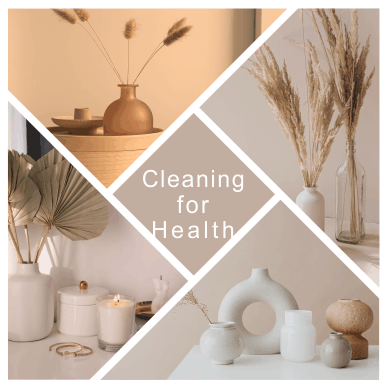
EarthSential: Your Path to Cleaner Surfaces and Healthier Breathing
When it comes to choosing the best all-natural cleaner with a focus on health benefits, EarthSential emerges as a standout choice. EarthSential offers a range of cleaning solutions that not only prioritize effectiveness but also safeguard respiratory wellness.
The ready-to-use all-purpose cleaners, as well as their concentrated formula, are crafted with meticulous attention to natural ingredients and non-toxic formulations.
EarthSential understands the importance of avoiding harsh chemicals and volatile organic compounds (VOCs) that can pose risks to individuals with chronic lower respiratory diseases. By harnessing the power of plant-based ingredients, EarthSential’s cleaners effectively cleanse and sanitize surfaces while minimizing the potential for respiratory irritation and triggering of symptoms.
With EarthSential, you can confidently clean your living environment, knowing that you are making a choice that promotes both cleanliness and respiratory health.
Purchase here…
EarthSential
All Purpose Cleaners:
Each designed to bring a touch of natural freshness and cleaning power to your home.
Available in: Clove, Lavender, Lemongrass, Mint & Orange. We have a natural cleaner for every preference. Dilute for light duty.
These versatile cleaners can be used on a variety of surfaces, including kitchen and bathroom counters, floors, furniture, and even pet items. With their powerful cleaning abilities, they effectively remove stains and dirt, leaving surfaces sparkling clean.
We prioritize your well-being and the health of our planet.
That’s why our products are carefully crafted to be non-toxic, ensuring a safe and healthy cleaning experience for you and your family.
$26.99
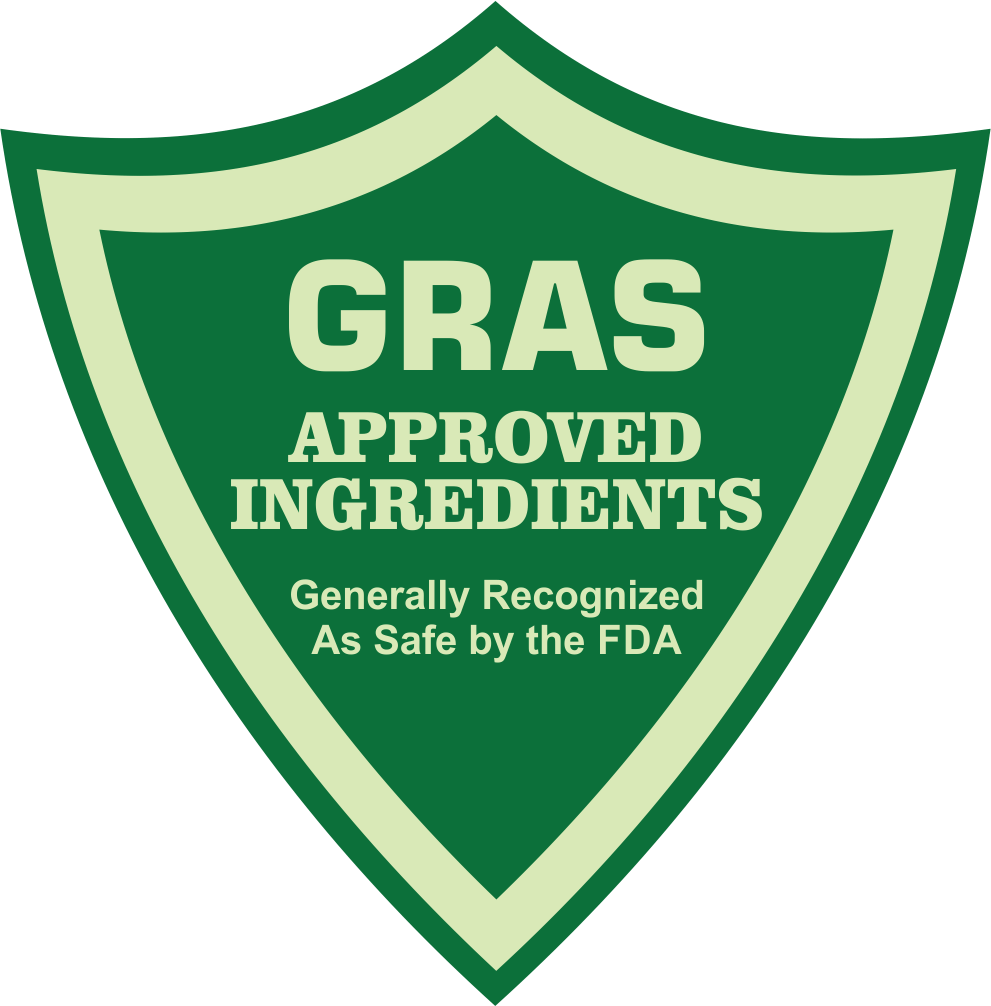
The SAFEST All Natural Ingredients
EarthSential products are made with safety as our first ingredient! Our ingredients are all natural food grade and all found of the GRAS List, approved as SAFE ingredients by the FDA. Rest assured that our products are the SAFEST in the world, we made them that way.
See what EarthSential
is all about!
Related Articles:
![]()
Intracellular Intruders:
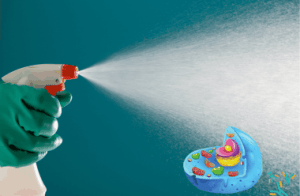
Cleaning Chemicals on Cellular Health
by Bonnie Pellerin Ι June 1, 2023 Ι 4 Min Read
Toxic Cleaners Exposed

Why You Need to Make the Switch
by Bonnie Pellerin Ι June 29, 2023 Ι 5 Min Read
The Bug-Banishing Benefits of Lemongrass

Your Ultimate Natural Defense
by Minus Bite Ι June 15, 2023
Get the EarthSential Newsletter
Good deals, great advice & essentially necessary.


